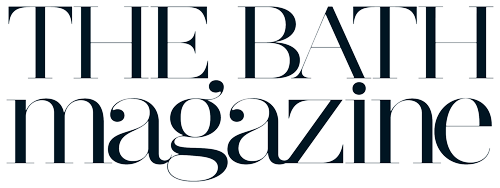Layla Gatens, Curator of Contemporary Programmes at the Holburne Museum, reflects on a new exhibition opening there in January by Turner Prize-winning artist Lubaina Himid.
Since 2018, the Holburne Museum has been delivering an ambitious programme of contemporary art, presenting new commissions and exhibitions by artists Grayson Perry, Sunil Gupta, Alberta Whittle, Aaron Angell with Steven Claydon and Nalini Malani. I’m excited to be building on this dynamic programme in 2024 with a new exhibition by artist Lubaina Himid, opening on 19 January.
Born in Zanzibar in 1954, Lubaina Himid is a British artist who has dedicated her career to uncovering marginalised and silenced histories, figures and cultural expressions. In a practice that includes paintings, prints, drawings and installations, her work addresses histories and legacies of colonialism and slavery, and engages with political questions and artistic traditions from the 18th century to the present day.

In her own words, Lubaina’s approach to art-making, education and curating is about “changing systems and highlighting what is missing. It’s a strategic practice.” This can be seen and felt across her work as an artist, curator and professor. It’s hard to summarise the depth, breadth and impact of her 40-year career – she trained in theatre design, and began curating exhibitions of her own work alongside other black artists in the 1980s, bringing black histories and identities to the forefront of the British art scene.
Lubaina has developed a distinct visual language which challenges forms of institutional invisibility and often makes powerful interventions centring the narratives and experiences not often presented in museum and gallery spaces.
Lost Threads, her new exhibition at the Holburne, will see 400 metres of vibrant Dutch wax fabric pieces weave and flow across the front façade and in and around the permanent collections in the Ballroom and Picture Galleries. First exhibited at Gawthorpe Hall in Burnley as part of the 2021 British Textile Biennial, the exhibition reflects the movement of the oceans and rivers that have been used to transport cotton, yarn and enslaved people throughout history. The installation traces the paradoxes of textile production and circulation by engaging with its material implications, and asks the following questions: How do we see multiple things at once? How do we thread different histories through a space? How do we open up conversations to engage with the complicated history of colonialism today?
Although the vibrantly coloured and intricately patterned fabric is seen as African, it was originally developed by Dutch colonial companies attempting to mechanically reproduce handmade Javanese batik cloth in Holland. When the material failed to take off in Southeast Asia, Dutch traders began to sell the cloth in West African markets where it became interwoven with the history, artistry and identities of the African diaspora.

The exhibition continues Himid’s exploration into the making of clothing histories of colonisation, female labour, migration and globalisation and exposes the role of colonisation in the formation of cultural heritage and identities. Displaying it in the Holburne in this striking installation brings this complicated history to our attention, inviting us to think of the unexpected people and the places which have shaped this material, and all of the hierarchies and relationships it represents.
It’s a desire at the Holburne to bring different perspectives and histories to our audiences through our Contemporary Programme, and as a curator my work has come to centre around how art and creativity enables us to dream and imagine different futures. I’m grateful to work with artists such as Lubaina who for many years has been demonstrating how art can be a tool for change and transformation, and whose long artistic practice embodies and supports forms of resistance.
Her work makes me think of a quote by scholar and activist bell hooks, who has influenced my approach to curating and working with others. She writes about building and sustaining community through education and the importance of working collectively and with love for societal change. I often go back to her writings and videos for inspiration and hope.
“The function of art is to do more than tell it like it is – it’s to imagine what is possible.” (bell hooks, Outlaw Culture: Resisting Representations, 2012)
Lost Theads by Lubaina Himid is at the Holburne Museum from 19 January – 21 April


